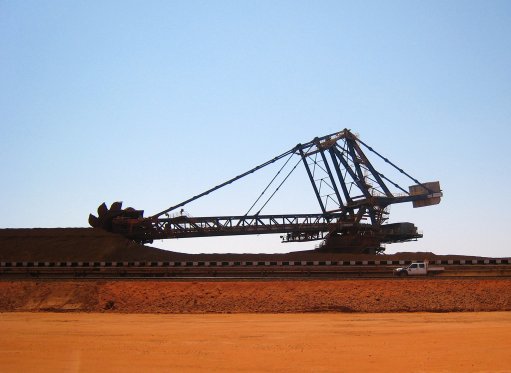
CONTINUING DEVELOPMENT On site, graduates of Fortescues' Vocational Training and Employment Centres continue to receive professional and personal support from its Aboriginal development coordinators
Twenty graduates of Australian metals group Fortscue’s Vocational Training and Employment Centre (VTEC) programme have secured employment as operators across the company’s Pilbara mine sites located 400 km south-east of Port Hedland.
Here the 9 South Hedland and 11 Roebourne-based trainees will have the support and opportunity to progress their skills, Fortescue CEO Nev Power notes.
The VTEC develops and delivers targeted courses based on relevant vacancies with Fortescue and its contractors, preparing Aboriginal people for a successful career in the resources industry.
He notes that family values enjoy prominence at the company’s VTEC graduations.
“Every VTEC class is like a family. I am always inspired by the close bonds our trainees form as they work together and support each other towards a stronger future for themselves and their communities. Their graduation is a testament to their hard work and determination and the commitment their families make to embrace this opportunity.”
South Hedland VTEC graduate Rowan Whitby returned to work having been a stay-at-homeparent for three years, raising his three children. Having secured a job at Fortescue’s Cloudbreak mine located 89 km west-south-west of Nullagine, in the Chichester range, Rowan’s goal is to remain employed and never look back.
Fellow South Hedland graduate Antoinette Tom says the support of the VTEC programme brought her out of her shell and gave her confidence. She hopes to use this opportunity to be a good role model. “I want to show other women that there are great opportunities for women in mining.”
On site, the graduates will continue to receive professional and personal support from Fortescue’s Aboriginal development coordinators, explains Power.
“Our Aboriginal development coordinators are dedicated to supporting our VTEC graduates every step of the way to ensure the transition into the workforce is as smooth as possible for the trainees and their families. Their success is our success.”
Meanwhile, Fortescue has been supporting a team of Aboriginal elders and community members in capturing the untold stories of the Yindjibarndi people on film since 2014.
An initiative of the Gamburlarna project, a three-year community development programme run by and for the Wirlu-murra Yindjibarndi Aboriginal Corporation (WMYAC), to which Fortescue has committed to contributing $3-million over three years, the Untold Stories project has seen 20 community members, including Big Hart’s Yijala Yala project and the WMYAC, work together to record the stories of some of the Yindjibarndi elders. As the company aims to make the initiative self-sustaining, the Untold Stories project also trains local community members to film, produce and edit the footage.
Power adds that the Untold Stories project is a great example of the many Aboriginal communities that are using digital technologies to illustrate and celebrate their ancient culture.
This year’s National Aborigines and Islanders Day Observance Committee theme, ‘Songline: The living narrative of our nation’ ,encourages reflection on the importance of Aboriginal and Torres Strait islander culture and celebrates its rich diversity. “It is important to increase our shared knowledge of Aboriginal culture, [which will] lead to a deeper understanding of Australia’s first people,” Power says.
Twenty community members have participated in the project so far, with five elders involved in the filming, including senior elder Bruce Monadee.
Monadee states that it was about time he told his story and had it recorded properly. “It is important to record what we have done and what happened. We have been walking with the other elders, roaming the Fortescue river and where we grew up. It was good to say how we felt when we first became a part of Roebourne, meeting other tribes and reflecting on how that made us feel and how it affected us,” he notes.